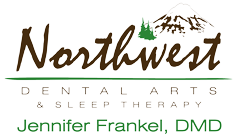GET YOUR BEST SLEEP
Sleep Therapy
LISTEN TO OUR SLEEP THERAPY RADIO SPOT!
What is Snoring & Sleep Apnea?
Snoring is a common breathing disorder that occurs during sleep and is generally considered to be simply a nuisance. Snoring, however, can be associated with a more serious condition known as Obstructive Sleep Apnea (OSA). The effect on health and quality of life has made OSA a significant public health issue. There are millions of people who suffer from all degrees of sleep disordered breathing from simple snoring to severe OSA. All OSA patients can be considered snorers, but not all snorers have OSA. The National Sleep Foundation reports that as many as 18 million people suffer from OSA and as many as 90% of individuals with sleep apnea are un-diagnosed.
Obstructive Sleep Apnea occurs when the airway completely collapses, blocking airflow into the lungs. The harder one tries to breathe, the tighter the airway seals. This airway obstruction (stoppage of air flow) typically lasts 10 seconds or longer and persists until the brain partially awakens the person, unconsciously closing the jaw and returning the tongue and throat to a normal position.
The sleep apnea cycle – falling asleep, jaw relaxing, airway collapsing, unconsciously awaking with a gasp, falling back asleep – can repeat itself 50 or more times per hour during the night. With a blocked passageway, one does not receive enough oxygen. Both the awakenings and oxygen deprivation can then trigger other health problems, including chronic sleepiness, headaches, depression, exhaustion, high blood pressure, and even strokes and cardiac arrhythmias (heart attacks).
The American Academy of Sleep Medicine (AASM) has approved Oral Appliance Therapy (OAT) as a first line of treatment for patients diagnosed with mild to moderate OSA. The AASM also recommends oral appliances for patients with severe OSA, who are unable to tolerate or cannot wear Continuous Positive Airway Pressure (CPAP) devices. Another option for people with severe OSA is Combination Therapy (wearing CPAP and an oral appliance together) to help reduce the pressure on a CPAP machine, making it more comfortable to use.
Here at Northwest Dental Arts & Sleep Therapy we can help. Please call and schedule a free consultation today 503.390.5417
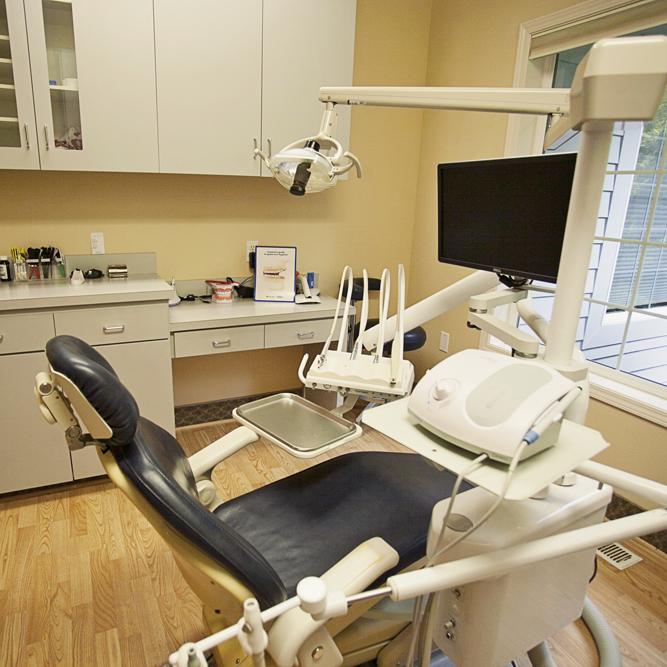
What is the Effective Treatment for Sleep Apnea & Snoring?
For people who are diagnosed with OSA and a cannot tolerate CPAP therapy, the oral appliance is a great alternative. Oral appliances are an effective treatment for many sleep apnea & snoring sufferers. Over 100 different oral appliances are FDA approved for the treatment of Snoring and Obstructive Sleep Apnea (OSA).
These appliances are worn in the mouth, just like a sports mouth guard or an orthodontic appliance, while you sleep. Oral appliances hold the lower jaw forward just enough to keep the airway open and prevent the tongue and muscles from collapsing and blocking the airway. By adjusting the degree to which the lower jaw (mandible) is held forward, we can maximize both the effectiveness of the appliance and the patient’s comfort.
Sleep Apnea & Snoring Appliances
Our team is trained in obstructive sleep apnea and snoring so we can assist you with treatment. We will conduct a full evaluation of your teeth, mouth, and temporomandibular joint (TMJ) including x-rays and a comprehensive health evaluation to ensure that your teeth and jaw structure are healthy enough to wear an oral appliance. Following the examination, you will have models of your teeth made and a follow-up appointment is scheduled to fit your custom oral appliance.
Adjusting to Oral Appliance Therapy
Since custom made oral appliances are adjustable, our dentist will work with you to maintain your jaw position by continuously monitoring your progress. It is important to maintain a prescribed follow-up schedule with our practice to ensure the device is working, fitting properly and that you see an improvement in your symptoms. It usually takes only a few days to adjust to wearing the oral appliance all night while sleeping.
Medical Insurance for Oral Appliance Therapy
Although a dentist like Dr. Jennifer B. Frankel will be placing your custom oral appliance, the great news is that oral appliances are generally covered under your medical insurance plan, not your dental plan. Prior to treatment, we will contact your health insurance, directly, for an estimate of insurance coverage. Due to variations in medical insurance plans, coverages do vary.
Medicare provides reimbursement for oral appliances for those 65 or older under the Durable Medical Equipment (DME) benefit. In order to help Medicare patients with a portion of the reimbursement for oral appliances, we at Northwest Sleep Therapy have enrolled as Medicare DME Suppliers for oral appliance therapy for obstructive sleep apnea.
Please feel free to call Northwest Sleep Therapy at 503.390.5417 for more information.
TYPES OF ORAL APPLIANCES
Below are just a few examples of custom made oral appliances (also known as mandibular advancement devices or MADs) that are available at our practice in Keizer, Oregon.
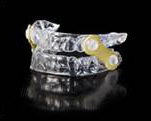
The EMA® – Custom appliance is a simple, patient-friendly oral appliance created for noninvasive treatment of snoring and OSA. The primary treatment mechanism of opening the bite and gently moving the mandible forward is achieved with the use of interchangeable elastic straps that offer varying degrees of mandibular advancement. The flexibility of these elastic straps provides unsurpassed lateral movement and overall TMJ comfort. The 2 mm thick pressure formed bases offer orthodontic retention (resulting in no tooth movement) and maximum anterior tongue space because there are no projections in the palate.
EMA® appliance uses elastic force to advance the mandible. Mandibular advancement is achieved with different length straps. The elastic pull can also be adjusted to suit the patient’s musculature. The straps provide complete lateral movement. The EMA® – Custom is available only to dental professionals.
FDA Approval: Approved for both Snoring and OSA
Date of FDA Approval: Sept. 29, 1997
FDA Registration Number: K971794
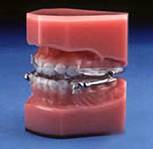
The Herbst appliance has been used for many years in the treatment of Class II malocclusions in children. With minor modifications, the Herbst appliance has been proven to be effective in the treatment of snoring and mild to moderate OSA.
This appliance allows patients to move laterally and vertically without disengaging the appliance. Also, if it is determined that the initial position does not provide the anticipated relief of the condition, the mandible can easily be moved forward. The Telescopic version allows the clinician to advance in ¼ mm increments by making one full turn of the protrusion collar up to 6-8mm from the start position. The appliance can be fabricated from hard acrylic, thermoactive and soft materials and is tooth retained via friction grip or clasps. The greatest advantage of the Herbst appliance is that it allows for very quick, easy and accurate mandibular protrusive adjustability. Bilateral interarch elastics are recommended to keep the jaw closed during sleep. NOTE: Some clinicians feel that limited lateral movement of the lower jaw during appliance use is beneficial for TMJ comfort while others believe it is of no benefit. Also, some clinicians find compromised effectiveness if the mandible is allowed to drop down even as much as a millimeter during appliance use while others find no difference. These are both areas that require more scientific study. We are presently unaware of the precise effect of these parameters on appliance effectiveness.
FDA Approval: Approved for treatment of snoring
Date of FDA Approval: March 1996
FDA Registration Number: K955822
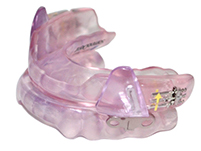
The Fusion device combines wings with the ease of adjustment that comes with screw calibration. Like all of the devices we recommend, the Fusion can be adjusted to find a setting which improves the quality of sleep and a setting that is comfortable for the patient.
Patients report the wings on the device are closer to their teeth allowing more room in their mouths. Because the two parts of the device are separate, patients are able to speak and drink during the night.
The Fusion is FDA cleared and covered by many medical insurance companies.


